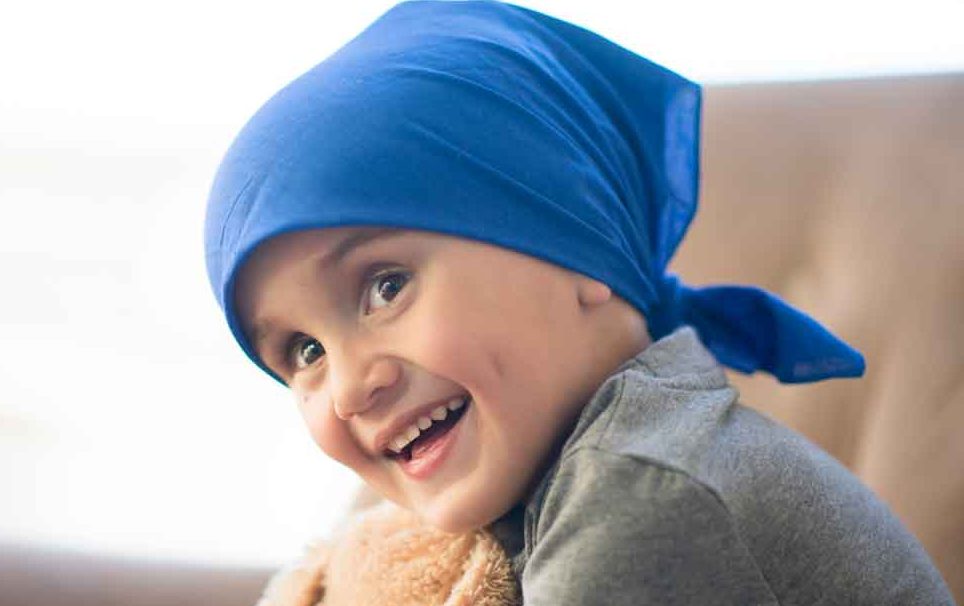Signs of Leukemia in Children

Knowing the signs of leukemia in children is important — so you’ll know when to take your child to the doctor to be checked for this childhood cancer.
Learning your child has cancer is a nightmare no parent wants to experience. But although cancer in children is rare, it does occur. The National Cancer Institute notes about 16,000 children and teenagers were diagnosed with a malignancy in 2022 — and often the diagnosis was leukemia, a cancer of blood-forming tissues.
In all, leukemia accounts for about 30 percent of all cancers in children and adolescents.
While leukemia most often strikes adults after the age of 55, it’s the most common cancer in kids younger than 15. Toddlers and preschoolers between the ages of one and four have the highest rate of leukemia, and they may not always be able to express they are feeling unusually tired, one of the important signs of leukemia in children.
YOU MIGHT ALSO LIKE: Caring for a Child with Leukemia
Although many health problems, most not very serious, can mimic some of the symptoms of leukemia in children, the American Cancer Society points you should take your to a doctor if you note any potential signs of leukemia in children. As with all cancers, early diagnosis and early treatment can boost chances of a cure. That’s why it’s important for parents to understand leukemia symptoms in children.
Leukemia symptoms affecting blood
Leukemia is a cancer of the bone marrow, the blood cell-producing spongey tissue in the center of most bones. Changes in blood are some of the key signs of childhood leukemia and often first show up in blood tests. The abnormal blood cells affect tissues and organs, leading to many of the leukemia symptoms in children.
When children have leukemia, they are most likely to have either of the two most common types of the disease — lymphatic or myelogenous leukemia.
Lymphocytic leukemia (also called lymphoblastic leukemia) is marked by an excess of lymphocytes, a type of immune system white blood cells. Myelogenous leukemia (referred to as myeloid or myelocytic leukemia) causes too many granulocytes, another type of white blood cells important for immune function.
As leukemia cells increase in bone marrow, they crowd out other normal blood cell-making cells, the American Cancer Society explains. That can lower the number of normal red blood cells, causing anemia, and decrease the number of certain types of other immune blood cells, leading to infections.
In addition, leukemia results in a decrease in blood platelets, cells that normally circulate in the blood and cause it to clot after a cut or other injury. A shortage of platelets may first be revealed if a child bruises easily, has frequent nosebleeds, or bleeding gums. Leukemia cells can also spread to other areas of the body, causing additional symptoms.
Signs of leukemia in children
Leukemia can be acute, with leukemia symptoms in children progressing quickly, or chronic, with symptoms progressing slowly.
Symptoms of leukemia in children include:
- You may feel swollen lymph nodes in the underarm area, on the side of the neck, in the groin, or above the collarbone. While swollen lymph glands are not unusual when a child has an infection, they can be a sign leukemia has spread to the lymph glands. Lymph nodes may also swell inside the abdomen or chest, but they can be discovered only with imagining tests like an MRI. Enlarged lymph nodes or a swollen thymus gland in the chest can press on the trachea, causing coughing or difficulty breathing.
- Joint or bone pain is caused when leukemia cells collect inside joints or close to the surface of a bone.
- Abdominal swelling results from leukemia cells building up in the liver and spleen.
- Poor appetite and weight happens from a swollen spleen or liver pushing against the stomach.
- Rashes and gum problems are associated with acute myelogenous leukemia and caused by leukemia cells spreading to the gums or skin (producing small dark spots).
- Extreme weakness and fatigue is a rare but serious symptom of the acute form of myelogenous leukemia. It’s due to very high levels of leukemia cells that build up and thicken blood, slowing circulation to the brain.
- Headache, seizures, balance problems, and vomiting may occur if leukemia is not diagnosed and treated until it has spread to the brain and spinal cord.
If your child has symptoms of leukemia
First, don’t panic. Most signs of leukemia in children can have other, often far less serious causes, according to the American Cancer Society. If your child or teen has any of symptoms of childhood leukemia, however, it’s crucial to take your child to a doctor so the cause can be determined and treated.
The good news is children with leukemia have a brighter future than ever before, thanks to advances in treatment.
Although survival rates for most childhood cancers have improved dramatically in recent years, the improvement has been especially marked for the most common childhood cancer — lymphoblastic (also known as lymphocytic) leukemia, including the acute form. The five-year survival rate for children with lymphocytic leukemia was less than 10 percent in the l960s and is now almost 90 percent.
YOU MIGHT ALSO LIKE: Gentler Cancer Treatment Saves Kids’ Lives
Updated:
August 28, 2023
Reviewed By:
Janet O’Dell, RN